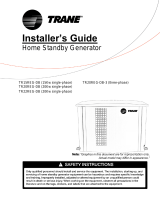HSM300 Synchronous Module User Manual Page 5 of 12
1 OVERVIEW
HSM300 Synchronous Module is specially designed for genset automatic parallel. On the basis of
the parameters, the module automatically tests the conditions of paralleling (volt difference, frequency
difference and phase) and sends parallel signal when the conditions meet parallel requirements.
HSM300 Synchronous Module is used for the occasions that gens synchronize to bus. The
module is brief to operate, easy to install and widely used for ship genset and land genset.
2 PERFORMANCE AND CHARACTERISTICS
Suitable for 3-phase 4-wire, 3-phase 3-wire, 2-phase 3-wire, single phase 2-wire systems with
frequency 50/60/Hz;
Adjustable potentiometer allows for set main parameters of synchronizing;
The operating parameters can be set via upper computer test software. LINK port should be
connected to upper computer via SG72 module (USB to LINK);
4 relays output, 2 relays are used for UP output, DOWN output, 1 SYNC relay is used for sync close
output, 1 STATUS relay is used for status output after close;
1 INH “inhibit sync close output” digital input, when the input is active and gens synchronize with bus,
the SYNC indicator will illuminate and sync close relay is inhibited to output;
Widely power supply range DC(8~35)V;
35mm guide rail mounting;
Modular design, pluggable terminal, compact structure with easy installation.
3 SPECIFICATION
Table 3 Product Parameters














